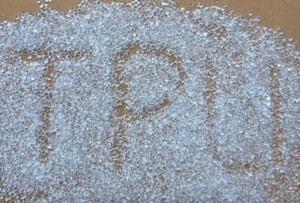In order to reduce product costs and obtain additional performance, polyurethane thermoplastic elastomers can be used as commonly used toughening agents to toughen various thermoplastic and modified rubber materials.
Due to polyurethane being a highly polar polymer, it can be compatible with polar resins or rubbers, such as when used in combination with chlorinated polyethylene (CPE) to produce medical products; Blending with ABS can replace the use of engineering thermoplastic plastics; When used in combination with polycarbonate (PC), it has properties such as oil resistance, fuel resistance, and impact resistance, and can be used to make car bodies; Mixing with polyester can improve its toughness performance; In addition, it can be well compatible with polyvinyl chloride, polyoxymethylene (POM), or polyvinylidene chloride; Polyester polyurethane can be well compatible with 15% nitrile rubber or 40% nitrile rubber/polyvinyl chloride blend rubber; Polyether polyurethane can also be well compatible with 40% nitrile rubber/polyvinyl chloride blend adhesive; It can also be co compatible with acrylonitrile styrene (SAN) copolymers; It can form an interpenetrating network (IPN) structure with reactive polysiloxanes. The vast majority of the above-mentioned blended adhesives have already been officially produced.
In recent years, there has been an increasing amount of research on the toughening of POM by TPU in China. The blending of TPU and POM not only improves the high-temperature resistance and mechanical properties of TPU, but also significantly toughens POM. Some researchers have shown that in tensile fracture tests, compared to POM matrix, POM alloys with TPU addition undergo a transition from brittle fracture to ductile fracture. The addition of TPU also endows POM with shape memory performance. The crystalline region of POM serves as the fixed phase of shape memory alloy, while the amorphous region of amorphous TPU and POM serves as the reversible phase. When the recovery response temperature is 165 ℃ and the recovery time is 120 s, the recovery rate of the alloy reaches over 95%, and the recovery effect is the best.
TPU is difficult to be compatible with non-polar polymer materials such as polyethylene, polypropylene, ethylene propylene rubber, butadiene rubber, isoprene rubber, or waste rubber powder, and cannot produce composite materials with good performance. Therefore, surface treatment methods such as plasma, corona discharge, wet chemistry, primer, flame, or reactive gases are often used for the latter. For example, American air products and chemical companies can significantly improve the bending modulus, tensile strength, and wear resistance of ultra-high molecular weight polyethylene fine powder with a molecular weight of 3-5 million after F2/O2 active gas surface treatment, and adding it to polyurethane elastomers in a 10% ratio. Moreover, F2/O2 active gas surface treatment can be applied to the oriented elongated short fibers with a length of 6-35mm mentioned above, which can improve the stiffness and tear toughness of the composite material.
Post time: Jan-19-2024

